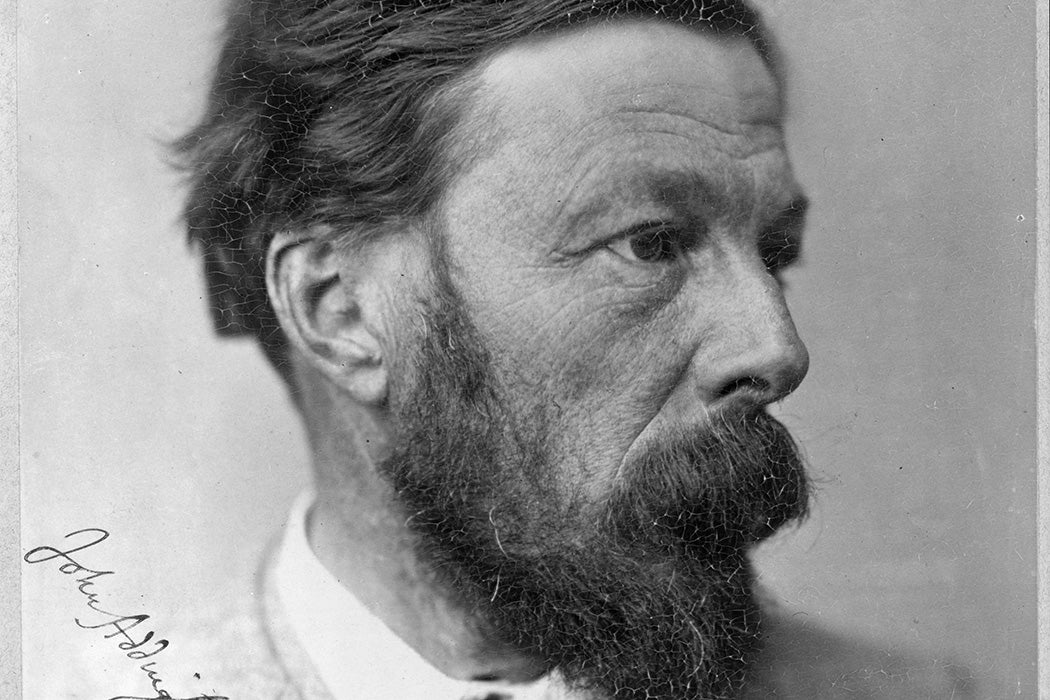In many times and places, people who would fall under today’s LGBTQ+ umbrella have grown up with no framework to understand their identities. As historian Emily Rutherford writes, that was true for Victorian scholar John Addington. But, thanks to Addington’s work, many men who followed him had new ways to put their sexuality in context.
As a student in 1850s Britain, Symonds read Plato’s Symposium and Phaedrus, encountering paiderastia—the social and erotic relationship between older and younger Athenian men. He later wrote that the concept was “the revelation I had been waiting for”—and something that he literally had no words to describe in his native language. He settled for a Greek phrase meaning roughly “the love of impossible things.”
But Rutherford writes that Symonds soon found his reading of the Greeks wasn’t universal. For example, one of his mentors, Benjamin Jowett of Oxford, dismissed Plato’s and Socrates’s descriptions of ennobling love between men as “a figure of speech.”
Symonds pushed back, arguing that historical accounts of same-sex relationships could provide guidance to men of his own time. His 1873 essay “A Problem in Greek Ethics” described love and sex between men in ancient Greece as well as different ethical structures governing same-sex relationships in other times and cultures. He was interested in a distinction between “common” and “heavenly” loves made by an Athenian named Pausanias in the Symposium. In his own culture, Symonds argued, the denial of public recognition for same-sex love reduced homosexuality to mere sexual gratification.
In 1878, a move to the Swiss Alps put Symonds in contact with a growing body of sexological literature published in German, much of which was unavailable in Britain due to obscenity laws. This research demonstrated the prevalence of men who had romantic and sexual relationships with other men in the present day. Toward the end of his life, he collaborated with doctor and sex researcher Havelock Ellis on a book that would eventually be published as Sexual Inversion.
Weekly Newsletter
But, unlike Ellis, Symonds viewed same-sex love as something that transcended unusual neurology. Rutherford writes that he sought to understand “how homoerotic love might be part of a wider, chivalric ideal.” He spent much of his life obsessed with Walt Whitman’s poems about comradeship—though Whitman, who had no concept of sexual orientation as a fixed identity, disavowed his interpretations of the poetry.
Rutherford notes that Symonds was married to a woman for much of his life, and his sexual encounters with other men were “fraught with class inequality and exploitation.” Yet he provided a new vocabulary for other men to talk about their intimate relationships. Oscar Wilde read Symonds with fascination and is said to have explained his love for Alfred Douglas with references to Plato, Michelangelo, and Shakespeare apparently cribbed from his work. E. M. Forster also wrote that reading Symonds helped him recognize his own homosexuality reflected in men from other times and cultures. Symonds’s work helped set the stage for a new flourishing of self-identified gay men in the twentieth century.







